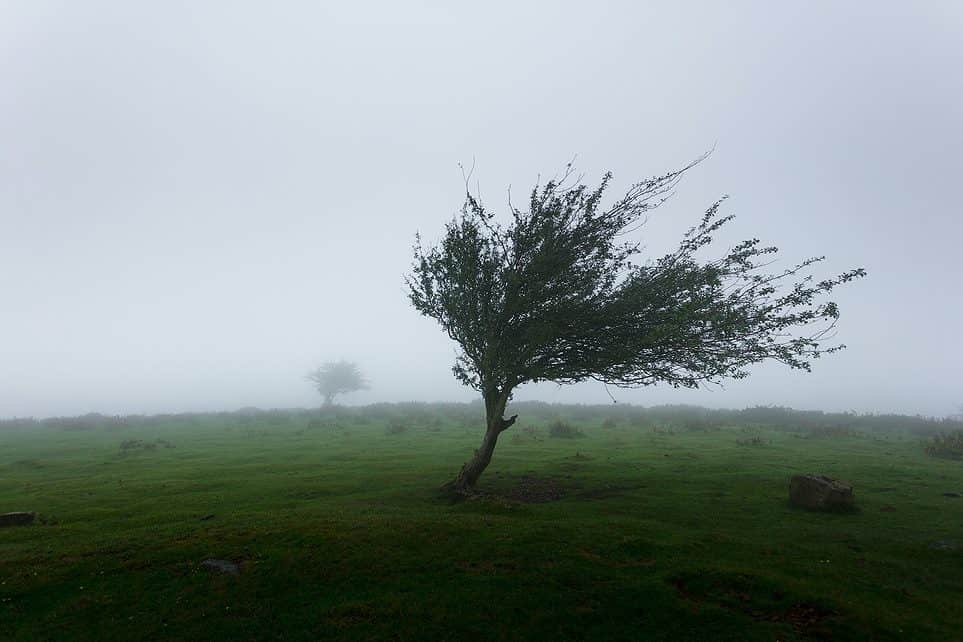Driving any type of vehicle on a highway is dangerous, but for RVs and camper vans, the risks can be amplified, especially in certain situations. In general, highway crashes are dangerous because they typically involve higher speeds, with two or more motorists often going at the same speed and then colliding. The impact force is equal to the sum of the speed each vehicle was going before the accident.
When an accident happens at a higher speed, safety features are less effective, and serious injuries are more likely. Secondary accidents can also happen if space is limited between vehicles.
If you’re in an RV, one of the hazards you have to be mindful of is the wind as well as the other standard risks. Wind doesn’t impact smaller vehicles much, if at all, but for RVs and bigger camper vans as well as buses and big trucks, it can be incredibly dangerous.
The following are things to know about wind and how dangerous it actually is if you’re driving an RV.
How Vulnerable Are RVs and Camper Vans to Wind?
An RV has lots of large and flat surface areas, and there’s no place for wind to pass through, so they’re especially vulnerable to it. There’s no place to relieve the pressure of the wind, so it just pushes against all the sides and the front and back. The wind can move an RV, regardless of its weight. Camper vans are a bit less affected by the wind because their surface area is smaller and usually not completely flat. It also depends on the size and type of the van. A big L4/H4 van is completely different than a small VW Transporter for instance.
Travel trailers are especially dangerous as they tend to sway when the winds are high, and it can cause a driver to over-correct. That can then cause the trailer to move back and forth, and it can get out of control.
An RV can tip over, especially while you’re driving it. They’re actually less vulnerable to toppling over when they’re parked.
It’s the force of the wind paired with the wind that the RV is generating that can lead to it completely tipping over.
How Much Wind Can An RV or Camper Van Handle?
So, how dangerous is wind for an RV and how dangerous is it for a camper van? Winds of just 10 miles per hour can have an impact on a moving RV and make it dangerous to drive. When an RV is parked, it can usually withstand wind of up to around 75 miles per hour.
If the wind is 20 mph, you driving at highway speeds in an RV would be drastically impaired, and if the wind is 30 mph, it’s dangerous to drive an RV on the highway. This off course also depends on the wind direction in correlation with your driving speed/direction. But since the road is never completely straight it might be a good idea to wait for the wind to pass even if it’s direction is favorable.
If you have a travel trailer or a fifth-wheel trailer, then you have to realize that road dynamics are different from a motor home. Even if the driving conditions are perfect, if you have a travel or fifth-wheel trailer, you have to be very mindful of the potential for trailer sway to happen, which was mentioned above.
One contributing factor to trailer sway is when a force pushes against the broadside of a trailer, and the wind is the most common of these forces.
The side of a trailer has a much bigger surface area than the vehicle that’s towing it, so crosswind is going to put more pressure on the trailer than on the vehicle. The larger the trailer, the more force that’s going to push against it, making it more vulnerable to swaying.
What to Consider Before Driving
If the conditions are windy and you’re going to be driving your RV or camper van, you want to think about four primary things. These are the speed of the wind, its direction, your driving speed, and how heavily you’ve loaded your RV in comparison to its gross vehicle weight rating.
The higher the wind, the faster you drive, and the closer you are to your maximum weight, the more dangerous it is to drive.
The red flag to be mindful of is if the wind is causing you to leave your lane. That means it’s time to stop because just the swerving itself can be dangerous or life-threatening for you and other people on the road.
As far as safe driving speed, RVs vary so much, but the most important thing to remember is the more vulnerable your RV is to wind based on the above factors, the slower you should drive. Avoid overloading your RV, too, because it’ll help you stay more stable on the road.
If you are going to drive when it’s windy, realize that outside of just tipping over, it can sustain quite a bit of damage if you don’t take the right precautions.
Finally, if you’re driving when it’s windy, and you can’t avoid it, keep both hands firmly on the wheel. The wind is going to try to push you into the next lane, so stay tight with your grip. Keep your speed low, and correct your steering as you move from a protected area to one that’s not. Be very mindful of the vehicles around you and keep your distance. Stop as often as you can for breaks because a lot of physical and mental energy goes into fighting the wind.
